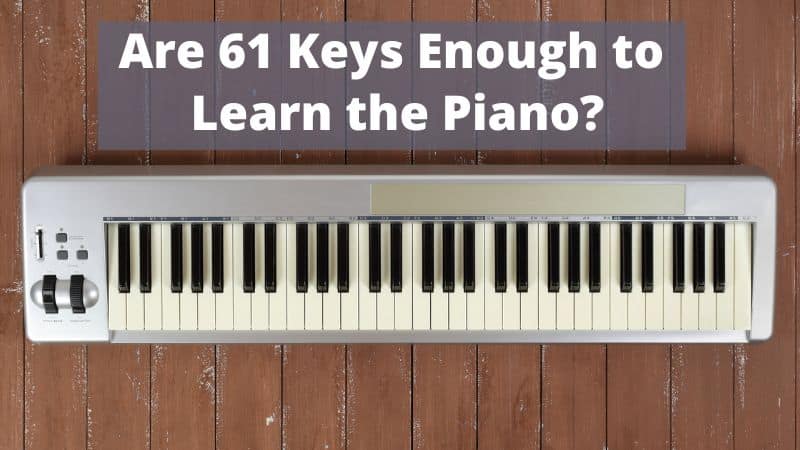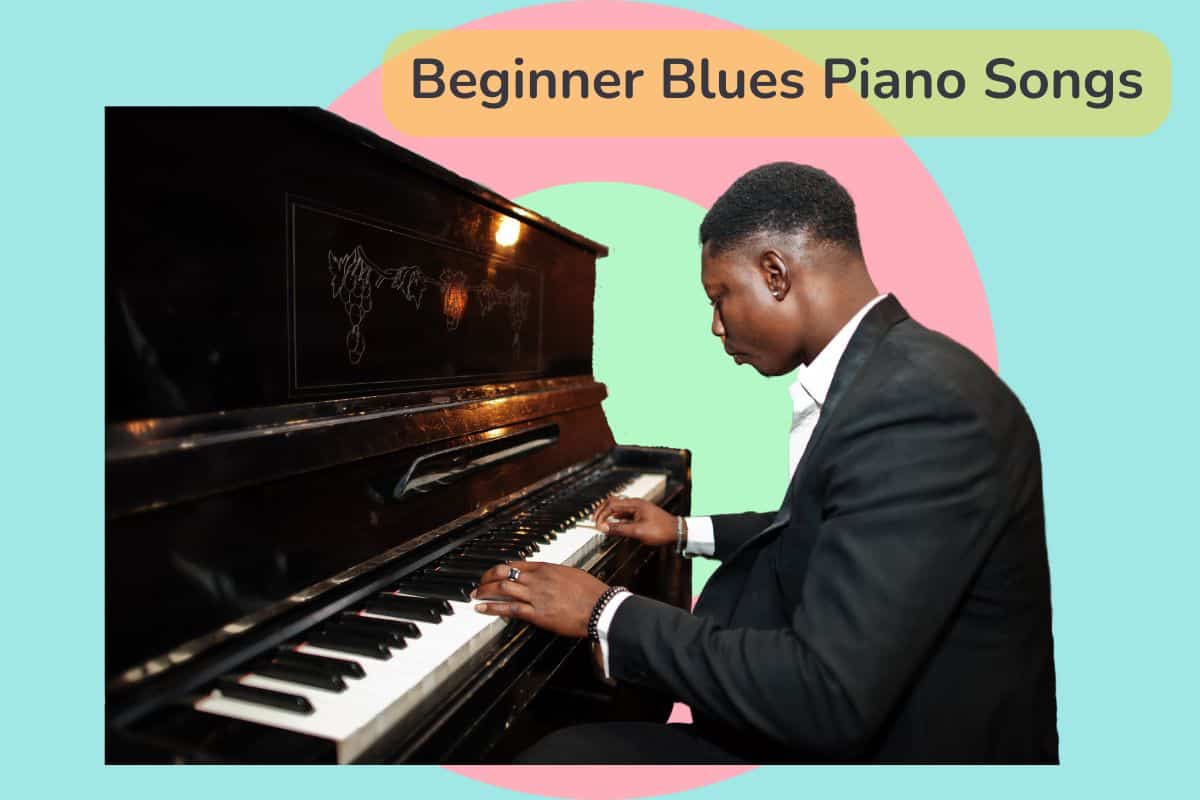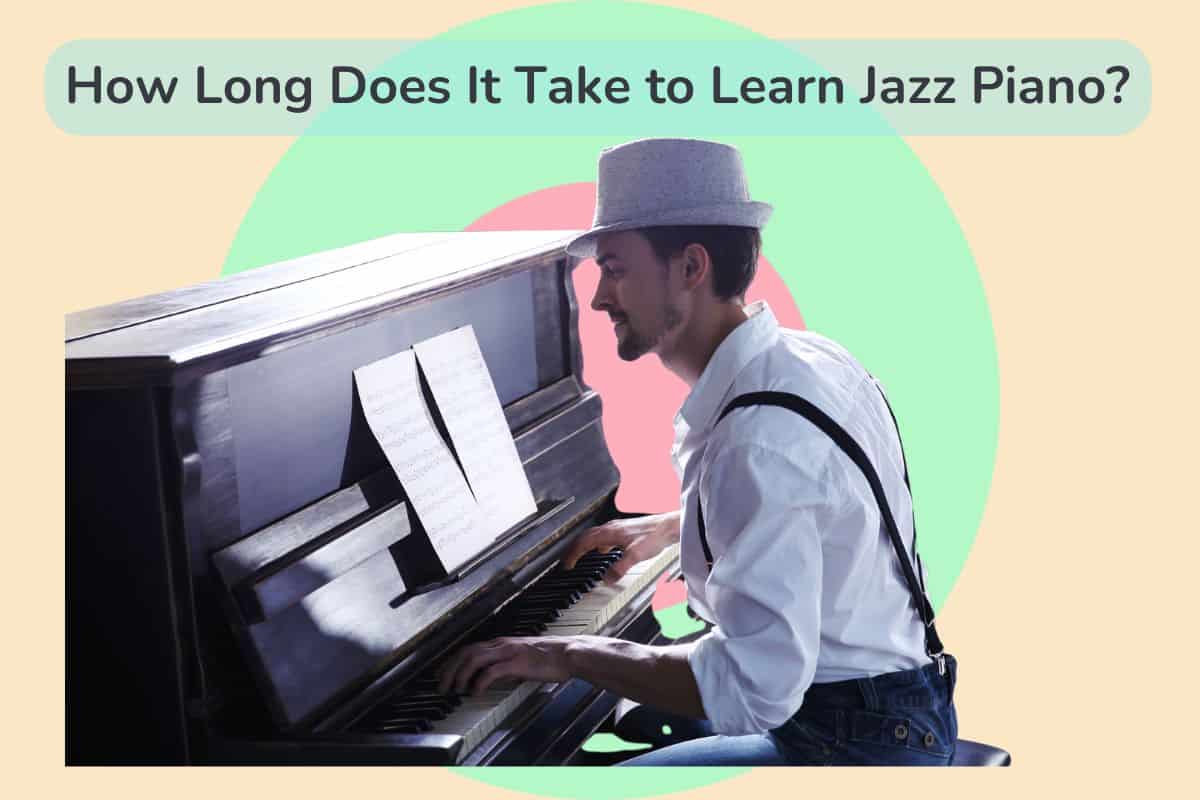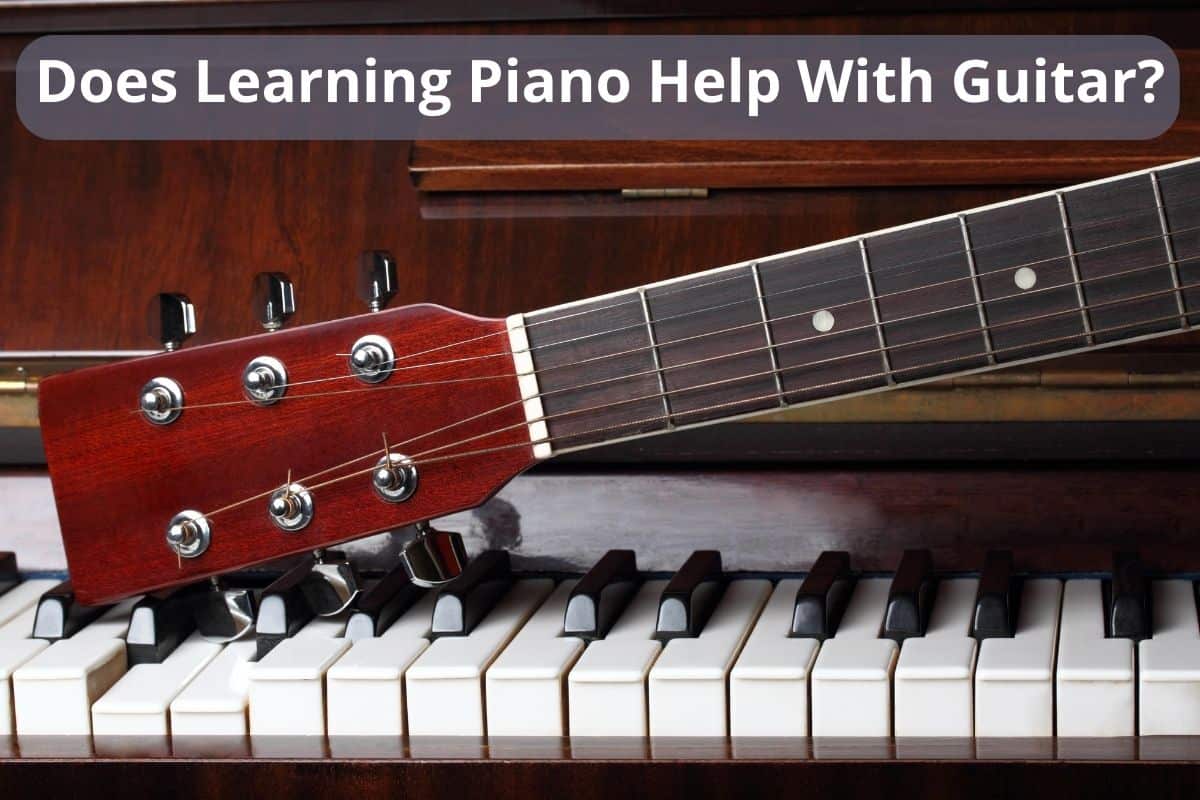While a 61-key piano is more advanced than what you would find in the children’s section, the diminutive size begs the question of whether that’s enough to get started.
Learning the piano on 61 keys limits what you can play. While it works well for portability and music production, the limited range and lack of realistic action cannot create the right environment for sustainable growth as a pianist.

This article delves deeper into what you can and cannot do with a 61-key piano. I’ll explain the advantages and disadvantages and how it compares to the popular 88-key keyboards and digital pianos.
Should You Learn the Piano on 61 Keys?
There are a few situations when learning the piano on 61 keys makes the most sense. While these are usually referred to as pianos, remember that the rudimentary design is often found on keyboards, and you should expect features on that level.
The first is if you have the option to own or use a 61-key piano for free, and this makes the most sense for your situation. Taking advantage of available resources is never bad; everyone needs to start somewhere.
If you have a limited budget, you might be able to find an 88-key piano in a similar price range or even find a quality 2nd hand one, but that’s hit or miss. You can usually count on fewer keys to cost less, and this keyboard may work better with your budget.
If you have limited space, 61 keys might fit in better than a full-size keyboard. This is also true if you need to travel with your keyboard for practice, especially if you don’t trust yourself to transport anything larger.
If none of these details are of significant importance, then you’ll probably get more out of investing in 88 keys. The additional octaves make it much easier to tackle music, and you can really zero in on developing your skills.
Advantages of a 61 Key Piano
A 61-key piano comes out on top for:
- Low up-front cost (for similar quality)
- Portability and space-saving
- Music production features
They may or may not matter to you, but they’re something to consider when choosing a piano to learn on.
Low Cost
One of the most attractive features of a 61-key piano is that they cost much less. Generally, the fewer keys you’re purchasing, the less you’ll pay out.
There are a few exceptions to this, so understand that this refers to instruments of similar build, brand, and quality. When you’re looking at two keyboards that check off the same boxes, the 61-key version can cost as little as ⅓ the price of 88 keys.
The low cost is great for anyone looking for a beginner keyboard, wanting to keep costs down, or anyone worried they’ll drop the habit in a few months. Parents of young children can get a feel for their child’s affinity for music without putting too much into it.
Certain 61-key digital pianos offer especially nice features for music production, such as drum pads or ambiance filters, that make that low price tag even more attractive.
Portability
A 61-key piano will always be smaller than those with more keys, and this is the obvious choice if you have limited space or need to transport the keyboard often.
Suppose you live somewhere with plenty of steps, rely on public transportation, or need to stash the instrument easily. In that case, a 61-key digital piano might be your best bet.
They’re less imposing than larger instruments. A 61-key piano is easier to maneuver on buses or quickly fit in the back of your rideshare. They aren’t as heavy (especially when comparing keyboards to digital pianos), and you can easily slide them into a closet or under a bed.
Music Production
While 61 keys may be a bit rudimentary for classical pieces from Beethoven, these electronic keyboards work well for modern music and production. This is partly due to its small size but also depends on how many additional features your keyboard has.
Many 61-key keyboards make up for the lost octaves with a transposition feature, as well as production tools such as:
- Drum pads
- Touch weight
- Ambiance filters
- Recording and lesson modes
- Metronome
- App syncing
Suppose you only want to experiment with production or just want something to hold onto to play modern music. In that case, the 5 octaves encompassed by 61 keys should suffice. The faster action also works well for more technical work, and these smaller keyboards work better than 88-key digital pianos with weighted action.
Disadvantages of a 61 Key Piano
A 61-key piano falls short when it comes to:
- Range/number of octaves
- Playing duets
- Learning how to play on a realistic mechanism
These revolve around the keyboard’s rudimentary design, and you’ll feel the effects when playing pieces in those missing octaves or any classical music from the Romantic period.
Fewer Octaves
The most apparent difference between a 61-key piano and anything larger is the lack of keys. When you choose the smaller size over an 88-key classical piano, you’re losing out on 2 octaves.

Some argue that the transposition feature on the keyboard makes up for this, but it’s really not the same. It might work with some contemporary music, but there will be a lot of classical music from the romantic era that won’t be playable. This includes famous pieces by musicians like:
- Chopin
- Rachmaninoff
- Debussy
Hitting the transposition button in most of their pieces is impossible without messing up or modifying the music. When you’re using both hands quickly, you’ll either drop notes or lose the flow completely, and that’s when disaster strikes.
A real piano with 88-keys allows you to learn these pieces correctly and with little frustration. It can deter you from giving up on learning to play the piano.
No (or Difficult) Duets
The lack of room also affects your ability to play duets, but you can’t use a transpose button to get past this limitation.
While it’s possible, playing a duet on 61 keys is uncomfortable at best. At its worst, you’ll need to transpose one part entirely, and you’ll miss out on the proper depth and dimension of the music.
Keep in mind that 20 fingers take up almost ⅓ of the room on the keyboard, and expect to be running over your duet partner at some point.
Lacks Realistic Playing Mechanism
An authentic playing mechanism is one of the significant differences between keyboards and digital pianos. You will rarely find a 61-key digital piano, so you shouldn’t count on a playing experience that properly emulates an acoustic piano.
Digital pianos usually have weighted action keys that are essential for developing the strength and muscle memory needed for proper playing techniques, including how to bring out particular dynamics and sounds.
A 61-key piano may offer touch sensitivity, but these are often just as expensive as their 88-key cousins, and you’re better off with the larger piano.
61 Keys vs. 88 Keys
While there are plenty of other key numbers out there, your decision usually comes down to learning 61 or 88 keys.
A 61-key piano is better for either contemporary music or anything that came before the invention of the piano (think Baroque period when the harpsichord was used). They’re great for travel, generally cost less for similar quality, and are a good option if you’re unsure about your future in music.
An 88-key piano is essential for anyone who wants to work through pieces from the Romantic period. They make it much easier to perform duets and play complicated music. You can find travel-friendly keyboards, but they will always take up more space and weigh more than 61 keys.
Expect to pay more for 88 keys, especially those that mimic a real acoustic piano, but understand that these are the best choices to invest in a future with music.



